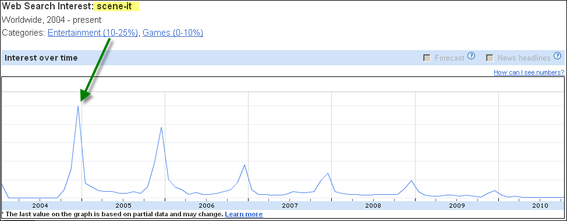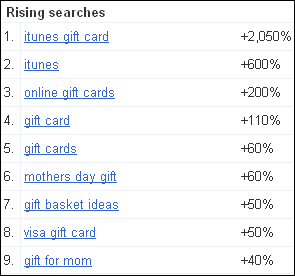A well optimized pay-per-click advertising campaign can lead to gigantic increases in both revenue and profits. Conversely, a campaign that is neglected can lead to missed opportunities or significant financial losses.
To help you prepare for this holiday season, here are 12 tips that will help you boost the performance of your pay-per-click (PPC) marketing efforts this holiday season.
1. Create ads for specific products, not just categories.
Throughout most of the year, there may not be enough search activity to justify ads that focus on individual products. Normally people search on broader terms rather than very specific items or SKU numbers.
The holidays are different. There will be many more product related searches during the fourth quarter, as publications release their top 10 lists, particular products get talked about on television and social media, and recipients make their gift requests.
For example, several years ago we noticed a huge return on a pay-per-click ad early in the holiday season. It was for a game called “Scene It?”. After some research, we discovered that this product received a lot of positive press, which created a huge demand. We then increased the PPC budget for this product’s keyword, and by the end of the holiday season, this one product generated revenues over $100,000, at a pay-per-click cost of less than $8,000.
The screen shot below, from Google Insights, shows that there were initially very few searches for this product, and then demand spiked in a big way during the holiday season.

Web search interest for Scene It?.
2. Speak to “gifts,” “gift cards,” and “presents” in keywords, as well as ad copy.
During the holidays, searchers are looking to buy gift cards, presents, and gifts for others. The data below, from Google Insights, shows that demand for these types of phrases is already beginning to greatly increase, even though we are still weeks away from Black Friday.

Rising search phrases.
By creating ads for the types of keywords above, like “online gift cards” or “gift for mom,” you can target shoppers who may be highly qualified and ready to buy. To maximize your return on ad spend for these keywords, bring shoppers to a highly relevant landing page on your website. Often these shoppers are looking for recommendations. So don’t just list items on your landing page; sell them.
3. Don’t forget about Hanukkah, New Year’s Day, and other fourth quarter holidays.
Sure, Christmas is the big driver of holiday sales. But setting your sights on shoppers who are looking to purchase products related to the other fourth quarter holidays can help you bolster your sales and profits. Do research to find holiday-specific searches or audiences and then address their needs in your ad copy and resulting landing pages.
For example, if you decide to target a phrase like “Hanukkah gifts for boys,” don’t send shoppers to a page on your site with a heavy Christmas theme. This could confuse your shoppers. Instead, consider bringing shoppers to a page that shows the most popular or highly recommended products that you sell that are purchased for boys celebrating Hanukkah.
4. Review “impression share” regularly.
Don’t set arbitrary ad budgets. Keep an eye on your impression share to make sure your ads are showing up in enough searches to drive optimal performance. Look at your impressions share weekly to spot short-term trends.
5. Recognize various cycles of holiday season shopping.
“Early bird buyers,” “peak buyers,” and “last minute buyers” may be motivated by different factors. Early bird buyers, for example, may be highly motivated to buy the season’s most popular products before everyone else. Or, they may want a special discount for buying early. Last minute buyers, on the other hand, may care more about delivery time than finding the best deal. Speak to these motivating factors and refresh your ad copy and site throughout the season.
6. Call out value propositions in ad copy.
Use your ad copy to call out value propositions that are especially relevant to holiday shoppers. If you offer overnight or priority shipping, for example, calling that out in ad copy can be a powerful motivator for buyers looking to make last minute purchases. Similarly, call out value-adds such as “Free Shipping on Gifts,” “Everything In Stock,” and “Best Price on [Holiday Product X].”
7. Use effective landing pages in order to shrink the sales funnel.
Once prospective buyers arrive on your site, they need to be met with relevant content and an easy path to purchase. You can increase your chances of completing a sale by creating PPC ads that speak to one product or a small group of products. Then direct the shopper to the product detail page, or a nicely merchandised landing page for the small group of related products.
Here are several examples of conversion boosters that have proven to increase conversion rates.
- Use keywords, phrases in landing pages. Dynamically insert the shopper’s keyword or phrase into your site’s landing page.
- Emphasize “add to cart.” Make your add-to-cart button stand out on your product page.
- Use call-to-action buttons. Have call-to-action buttons like “shop now” on your landing pages.
- Set expectations. Set accurate expectations in the ad copy, before the click, as to what users will find when they click, and always follow through. For example, if you promise free shipping, make sure your site’s landing page highlights that offer prominently.
8. Use social media to identify hot products, and target them with pay-per-click advertising.
Market trends change all the time and last year’s hot product won’t necessarily perform well this year. Research your market and find out what the hot sellers might be this year. Monitor blogs, Twitter and Facebook in order to see what your buyers are looking for or raving about. Also make sure to note any colloquial or slang names for the items in order to create effective keywords and ad copy.
9. Utilize remarketing ads.
Many shoppers will start doing their research in the next few weeks. But they may not place their order until later in the holiday season. By utilizing holiday themed image ads as part of your remarketing campaigns, you will be able to keep your brand in the forefront of shoppers’ minds as they browse the web. Your ads will seem to “follow” them throughout many pages on the Internet, and shoppers who were previously only aware of your brand may now recall it when they are ready to make a purchase. This will give you a huge advantage over your competitors. While you are at it, create a unique coupon code offering a percentage off or free shipping to convert the consumer.
10. Decorate your website and make it relevant.
Brick and mortar retailers have been decorating their stores for years to create and cater to the holiday buying spirit. Online retailers should do the same, by dressing up logos, headers, and holiday pages.
In addition, you can create special holiday buying guides to help shoppers who are looking for gift ideas. On your landing pages, you can highlight special promotions or incentives.
11. Analyze reports more frequently.
While it is always important to run performance reports on a regular basis, run reports more frequently during the holiday season. Reports allow you to see what particular product categories are showing an increase in traffic, as well as sales. You can then allocate budget quickly to meet changing demand. You can also utilize ad reports to measure your messaging and its effect on click-through rates.
12. Use the Google Display Network.
The Google Display Network has come a long way, and this holiday season you can take advantage of it by targeting display ads to the exact demographic that you wish to reach. Google has an Ad Planner feature that allows you to research marketing efforts beyond its search engine. With this tool you can now target, within the network, specific websites, demographics, geographical locations and more.
And by refining target interests, such as automotive and gardening, you can identify which sites you wish your ads to appear on. This is a powerful tool that can be used to craft specific messaging that will reach your audience throughout the entire web.
Summary
Although the implementation of these 12 tips may require a lot of work, that work can be very rewarding. We have seen pay-per-click marketing become increasingly profitable over the years, and the holiday season can be especially profitable for those who take advantage of it.



